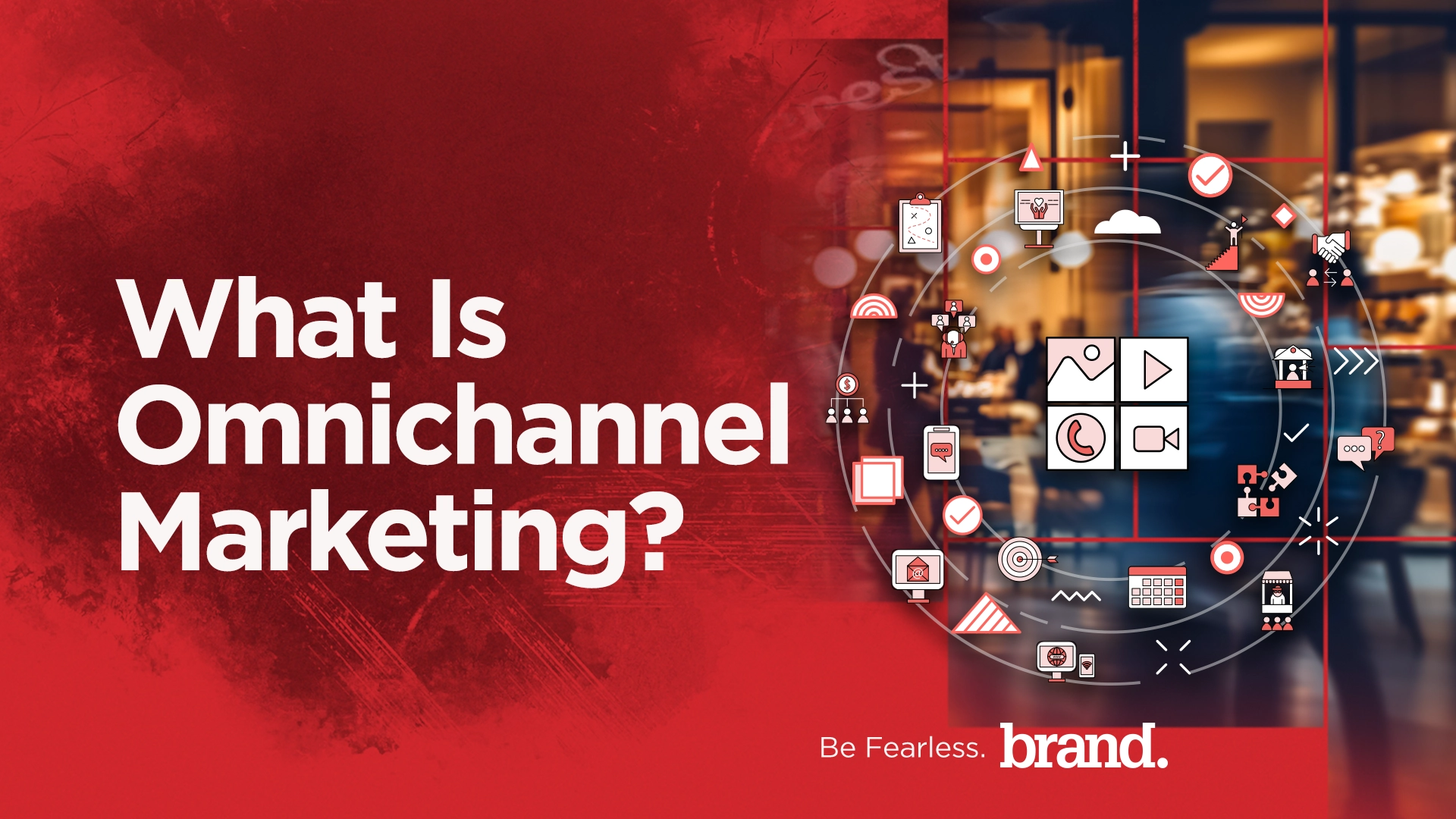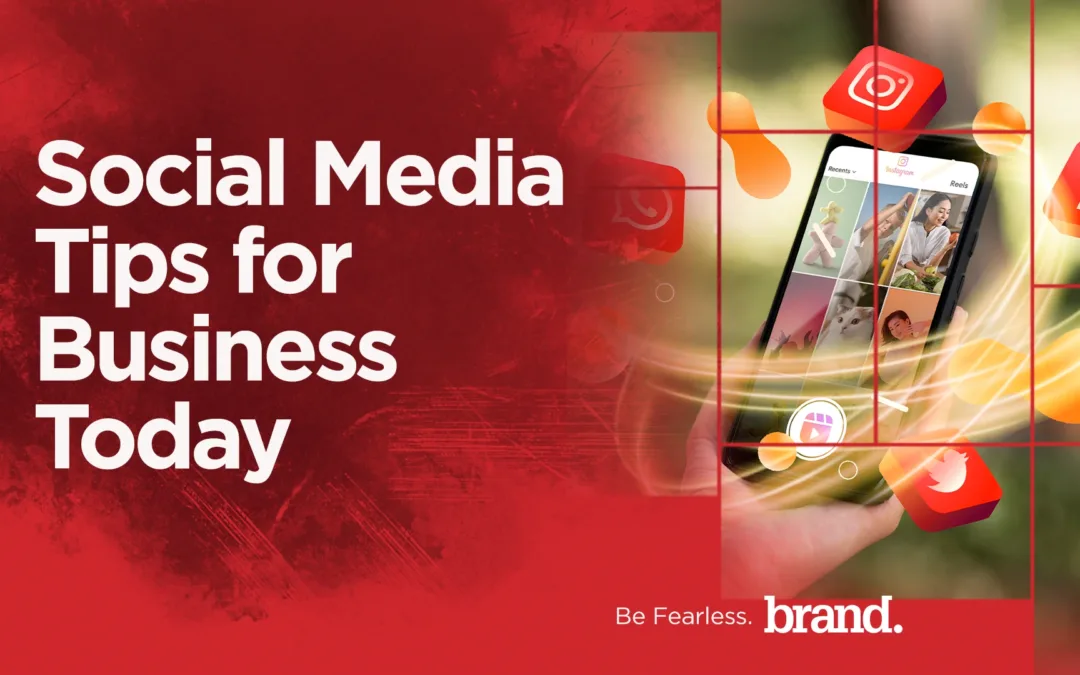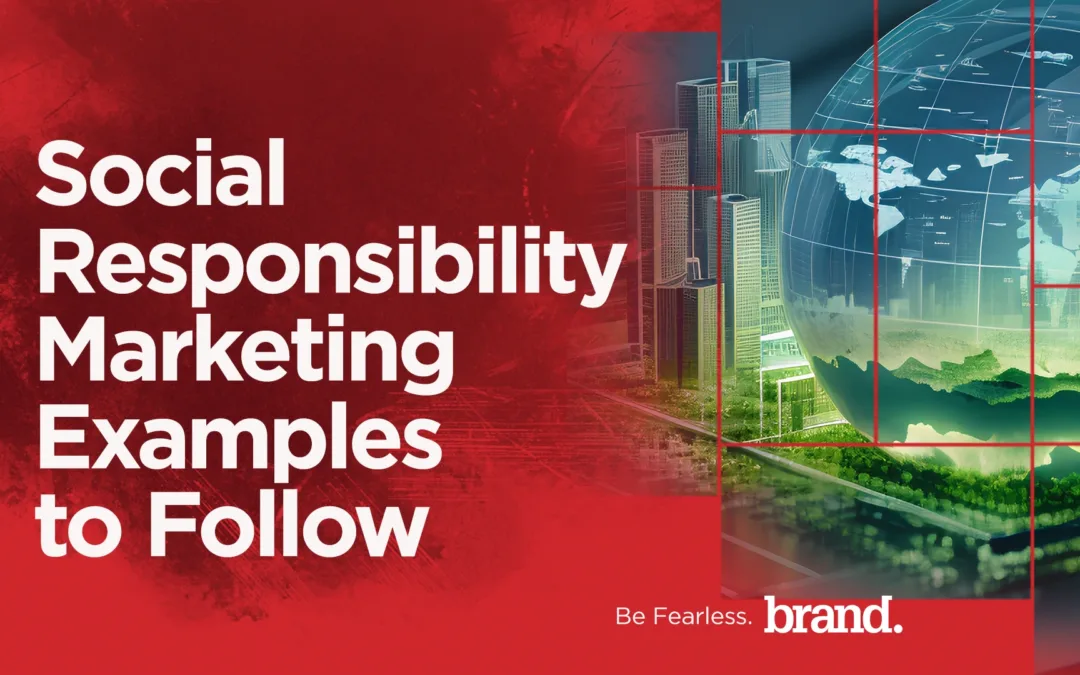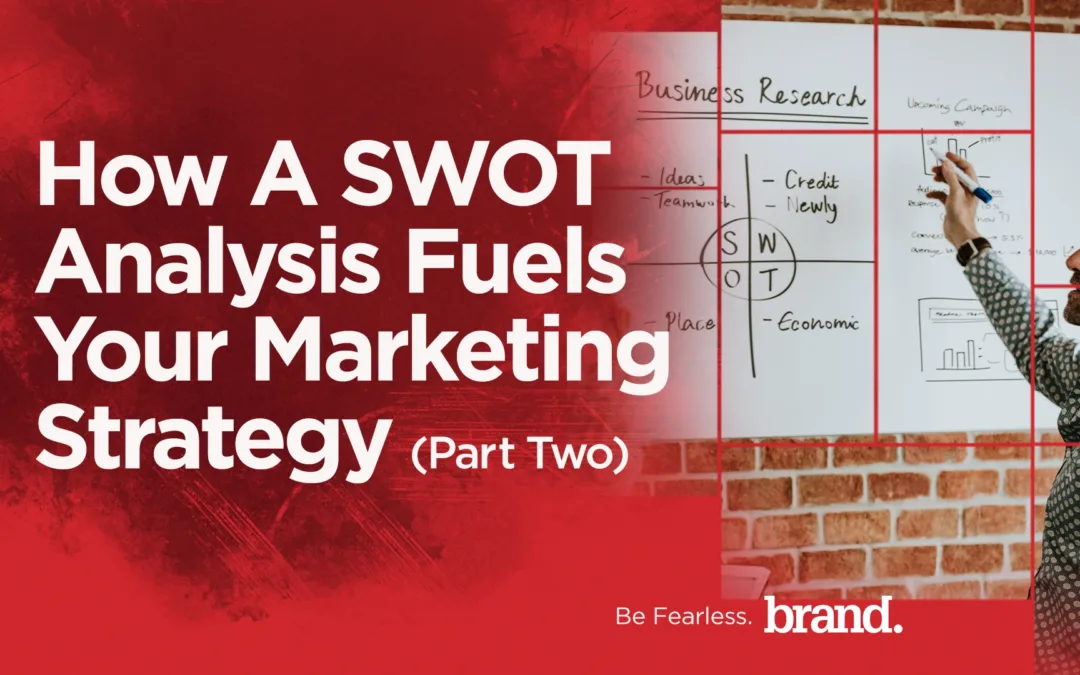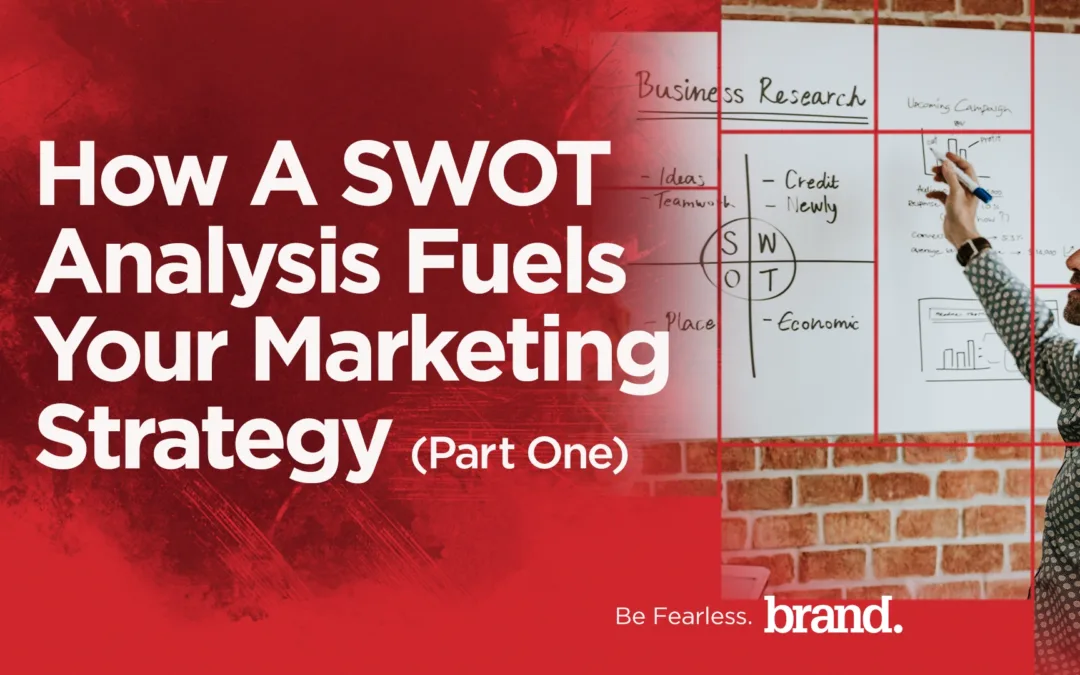Big Word. Big Deal.
Omnichannel marketing is one of those impressive industry buzzwords that sounds like you need a Harvard MBA to understand what the heck it means. But it’s actually a straightforward, commonsense strategy for delivering a unified customer experience across all of your marketing and communication channels.
Actually, it’s more than a strategy, it’s a brand philosophy. It’s about meeting your customers wherever they are, not with a fragmented collection of ads, emails and social posts, but with a consistent, familiar experience that moves with them across multiple platforms. It’s the difference between shouting at your audience from different directions and having a friendly, ongoing conversation that feels effortless and natural.
The goal of omnichannel marketing is to make sure your customers have the same, high quality experience no matter where or how they engage and interact with your brand, whether it’s on your social media sites, website and blog, at your brick-and-mortar stores and events or in your online advertising and PR.
OK. So, what does that look like? Imagine you’re shopping online for some new sneakers. You browse a website, but you’re not quite ready to buy. Minutes later, you get an email with a 10% off coupon for the exact pair of All Stars you really caught your attention. Next day, checking your Gram, an ad pops up telling you how great you’ll feel wearing those kicks. How you’ll be cooler than Gronk. How you’ll move like Breanna. Oh, and how you’ll now get 15% off.
Today’s customers are everywhere, bouncing from device to device, channel to channel. Research from Google found that 90% of consumers who own multiple devices switch between them to complete a task, whether it’s researching a product, comparing prices or making a purchase.
This means customers might start browsing on their phone at work, continue researching on their laptop at home and complete their purchase in-store. Omnichannel marketing lets you keep pace with them along the way, and even anticipate where they’re going so your optimal brand experience will be waiting for them, ready to impress and ready to convert.
If your brand’s touchpoints aren’t connected, you’re likely losing that sale to a competitor who is with them through every step on their journey.
Omnichannel Services: The Nuts and Bolts of a Solid Strategy
Your omnichannel marketing strategy is built on a solid understanding of who your customers are, where they want to go and what motivates them to get there. This requires omnichannel services that create a personalized journey that guides them to your consistent customer experience wherever they interact with your brand. These include:
Data Acquisition: Collecting relevant, measurable data is at the heart of omnichannel marketing strategy. Every click, every purchase, every abandoned cart tells a story and creates an opportunity. The right omnichannel services transform data into proactive, personalized messaging that anticipate what customers need before they even realize they need it. Data forms the solid foundation of an intuitive, customer-first strategy that supports long-term loyalty and trust.
Data Analysis: Tracking and interpreting data that helps you know your customer inside out – their behaviors and motivations, what they like and don’t like, where they hang out online, their shopping habits, and more. These insights let you tailor your experience to their individual preferences and needs.
Channel Integration: Making sure all of your marketing channels talk to each other. Your website, social media, brick-and-mortar stores and customer service should all speak the same language and deliver the same message and brand experience.
Consistency: Keeping your brand’s tone, message, and visual identity uniform across all channels. If your Instagram is edgy and bold, but your website feels corporate and stiff, customers notice. They should feel like they’re interacting with the same brand, whether they’re in-store or on Instagram.
But consistent customer service also plays a critical role, by ensuring that whether a customer reaches out via live chat, social media or in person, they can expect the same level of support. Omnichannel marketing makes sure your brand looks and feels like your brand, no matter where or how customers interact with it.
Technology: Leveraging the power AI from chatbots that provide instant customer service, to loyalty programs that recognize and reward individual customers across channels, to dynamic pricing models that adjust in real-time, AI is making omnichannel marketing smarter, faster, and more effective than ever.
The right technology tools, such as mobile apps, geolocation-based offers and even augmented reality shopping help create seamless, frictionless experiences that boost high quality engagement and casual interactions into meaningful, lasting relationships.
Personalization: Using what you know about your customers to give them what they want, even before they know they want it. Omnichannel marketing is about being proactive and agile, instead of reactive or passive.
AI is revolutionizing personalization at scale. According to Salesforce, 76% of consumers expect companies to understand their needs and expectations, yet only 49% feel that brands actually do. AI-enhanced omnichannel services bridge this gap by analyzing customer behavior in real-time, predicting preferences and delivering hyper-personalized messages and experiences across multiple platforms.
Adaptability: Responding to constantly changing conditions and new opportunities. Customers can be unpredictable, but omnichannel services keep up with their ever-changing behaviors and preferences. AI-driven analytics track patterns and allow brands to adjust messaging, offers, and recommendations instantly. And whether a customer shifts from desktop to mobile or from online to in-store, the experience remains seamless.
Adaptability isn’t just convenient, it’s expected. Today’s consumers assume brands know who they are and what they like, and they’re far more likely to engage with brands that get it right.
The Nuts and Bolts of a Successful Omnichannel Campaign
Omnichannel marketing campaigns perform best when their core tactics – advertising, PR, email, SEO and data analysis – work together in perfect sync. When we integrate these tactics, they all become more effective. Omnichannel marketing creates a synergy that constantly drives engagement and conversions, builds loyalty and maximizes ROI.
Advertising: Whether it’s a paid search ad, a sponsored Instagram post or a display banner, a strong advertising component ensures that the right people see the right message at the right time. But power of those ads can be amplified with PR tactics to help deliver their full potential.
Public Relations: PR builds credibility through targeted media placements, thought leadership, organic brand storytelling and more. It reinforces and extends your ad messages, giving more customers and prospects more opportunities to engage with your brand and more reasons to trust your brand.
Email Marketing: Once your ads and PR create awareness and establish trust, it’s time to get personal with your prospects and customers. Integrating email marketing into your omnichannel services is a great way to start building strong, lasting, profitable relationships. A well-conceived, well-timed email can nurture the interest sparked by an ad or a PR article, reminding potential buyers why they were interested in the first place.
Data Analysis: Data is the high-octane fuel that powers all omnichannel marketing campaigns. Thorough analysis converts data into actionable insights that drive smart marketing decisions. It helps pinpoint the ideal audience segments and determine which demos are most likely to engage with certain types of content, messaging and offers.
It helps custom-tailor your ads to individual audience personas, increasing engagement while reducing wasteful spending. Data analysis allows us to connect every consumer touchpoint so our clients can anticipate changing customer needs and preferences, rather than react to them.
PR taps the power of data analysis to monitor media mentions, social conversations, and engagement metrics. This provides real-time insights into how your brand is perceived in the marketplace. If a press release or media story is generating buzz, we can follow up with similar messaging. If consumer sentiment analysis reveals negative trends, we can pivot quickly to dispel concerns before they escalate.
Effective email marketing isn’t about blowing up inboxes. It’s a surgical strike that uses data acquisition and analysis to understand how recipients interact with emails – what they open, what they ignore, what they click on and why. It lets us refine messaging and deliver relevant, hyper-personalized content that meets each customer at every step on their journey.
Search Engine Optimization: SEO plays a crucial role in effective omnichannel marketing by ensuring that customers can easily find your brand at every stage of their journey. Whether they discover your business through organic search, a social media link or a news story, SEO optimizes content visibility across all platforms.
A strong SEO component enhances all other omnichannel services by driving consistent messaging, improving search rankings and increasing discoverability across multiple channels. SEO data analysis provides deep insights into what customers are searching for and allows you to create content that meets their needs, enhances engagement, and boosts long-term loyalty.
The real magic of omnichannel services happens when all of these tactics continuously inform and refine each another. Ads drive traffic that feeds into email nurturing. PR builds credibility that strengthens ad effectiveness. SEO ensures high visibility, while data analysis keeps everything optimized in real time. No single tactic operates in isolation; instead, they work together to create a fluid, customer-first experience that keeps your brand top-of-mind and top-of-market.
Omnichannel Services: Optimizing Results and ROI
One of the biggest advantages of omnichannel services is their impact on revenue. A study by Omnisend found that brands using omnichannel marketing saw a 494% higher order rate compared to those relying on a single channel. McKinsey & Company found that customers who engage across multiple touchpoints aren’t just more likely to buy, they spend 13% more than those shopping through a single channel. The reason? Personalization and consistency build trust. And trust drives purchasing behavior.
Omnichannel marketing also plays a key role in customer retention. The Aberdeen Group reported that brands with strong omnichannel engagement strategies retain 89% of their customers, compared to just 33% for those with weak omnichannel integration. When you offer compelling incentives and trustworthy product recommendations, when you remember customer preferences and provide seamless service across multiple platforms, they’re far more satisfied and far more likely to buy from you again and again.
Omnichannel services are the Swiss Army knife of tools and technologies that make this all possible. They work behind the scenes to create a seamless flow of consistent communication and experiences across all platforms. Omnichannel services help make every encounter at every touchpoint an opportunity to surprise, delight and inspire your customers.
When omnichannel services are done right, your customers should be able to sense the vibe and aromas of your cozy, hipster coffee shop not just when they’re chilling at the table, but when ordering a latte on your app or scrolling on Instagram.
When you combine this kind of integration with personalization, omnichannel services let you tailor your brand experience and marketing messages to individual customers, and make them feel like your brand truly “gets” them.
Omnichannel marketing helps make sure you’re always where your customers are and ready to engage with them in meaningful ways. When customers come to expect a unified, seamless experience, they’re more likely to trust your brand and, ultimately, spend more money time and time again.
Satisfied customers become loyal brand advocates who drive significant sales and revenue growth. By leveraging omnichannel services, you can optimize your omnichannel marketing strategies and expenditures while maximizing bottom-line results and ROI. If you’re looking to work with a marketing agency who is seasoned in leveraging omnichannel marketing on behalf of their clients contact us below today.

